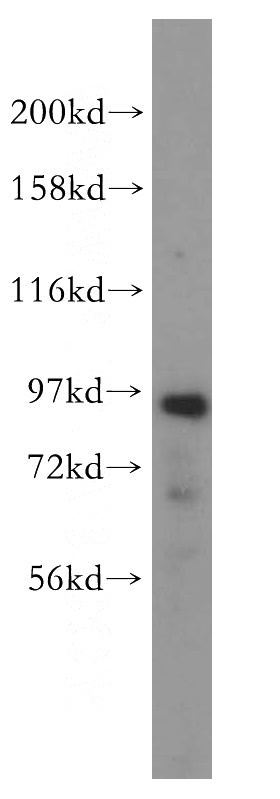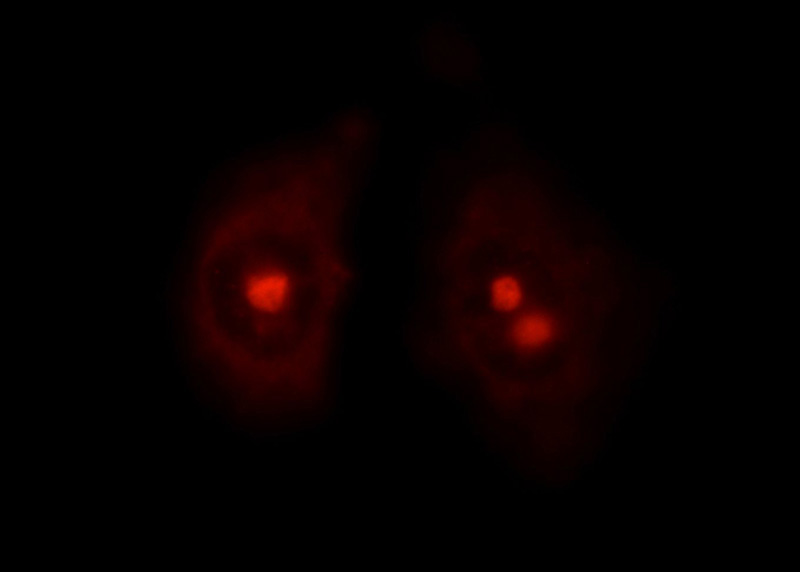-
Product Name
NVL antibody
- Documents
-
Description
NVL Rabbit Polyclonal antibody. Positive IF detected in HepG2 cells. Positive WB detected in mouse lung tissue, mouse kidney tissue, mouse thymus tissue. Observed molecular weight by Western-blot: 95kd
-
Tested applications
ELISA, WB, IF
-
Species reactivity
Human,Mouse,Rat; other species not tested.
-
Alternative names
nuclear VCP like antibody; Nuclear VCP like protein antibody; NVL antibody; NVLp antibody
-
Isotype
Rabbit IgG
-
Preparation
This antibody was obtained by immunization of NVL recombinant protein (Accession Number: BC012105). Purification method: Antigen affinity purified.
-
Clonality
Polyclonal
-
Formulation
PBS with 0.02% sodium azide and 50% glycerol pH 7.3.
-
Storage instructions
Store at -20℃. DO NOT ALIQUOT
-
Applications
Recommended Dilution:
WB: 1:500-1:5000
IF: 1:10-1:100
-
Validations

mouse lung tissue were subjected to SDS PAGE followed by western blot with Catalog No:113449(NVL antibody) at dilution of 1:600

Immunofluorescent analysis of HepG2 cells using Catalog No:113449(NVL Antibody) at dilution of 1:25 and Rhodamine-Goat anti-Rabbit IgG
-
Background
NVL(nuclear VCP-like) belongs to the AAA ATPase family and may facilitate the dissociation and recycling of nucleolin, thereby promoting efficient ribosome biogenesis. It acts as an ATP-dependent zinc metallopeptidase. This protein has 5 isoforms produced by alternative splicing.
-
References
- Yun C, Wang Y, Mukhopadhyay D. Nucleolar protein B23/nucleophosmin regulates the vertebrate SUMO pathway through SENP3 and SENP5 proteases. The Journal of cell biology. 183(4):589-95. 2008.
Related Products / Services
Please note: All products are "FOR RESEARCH USE ONLY AND ARE NOT INTENDED FOR DIAGNOSTIC OR THERAPEUTIC USE"
